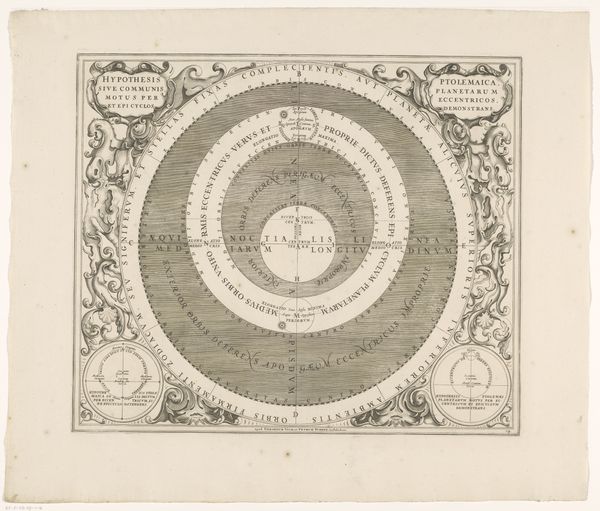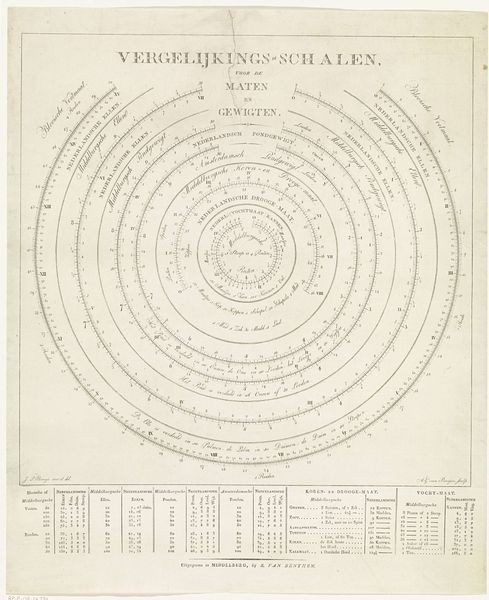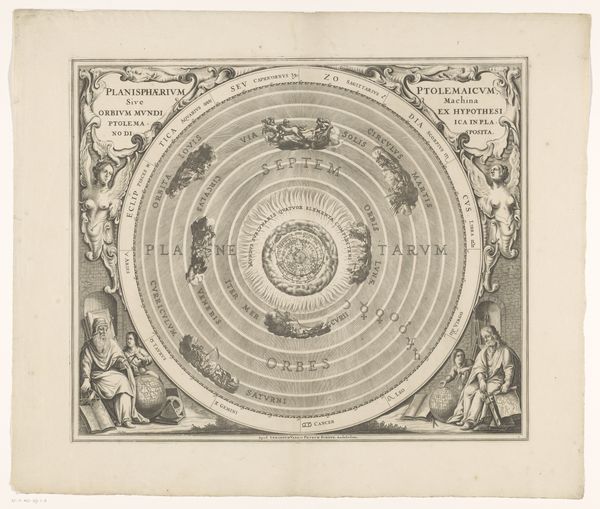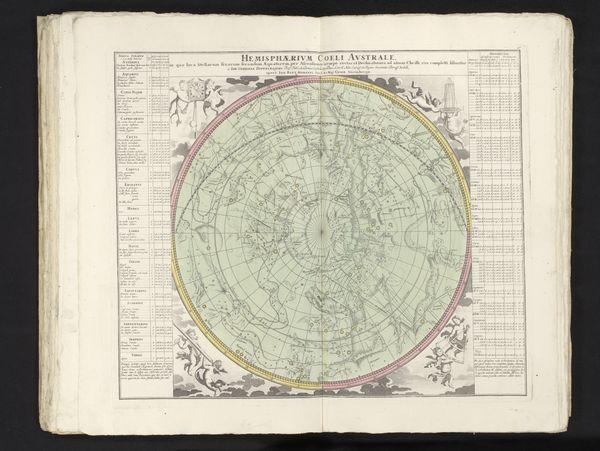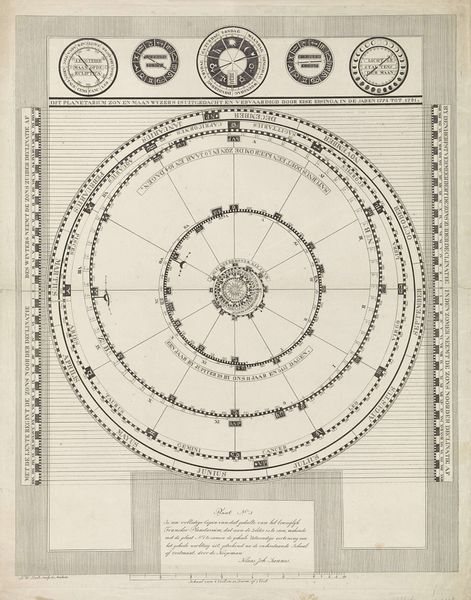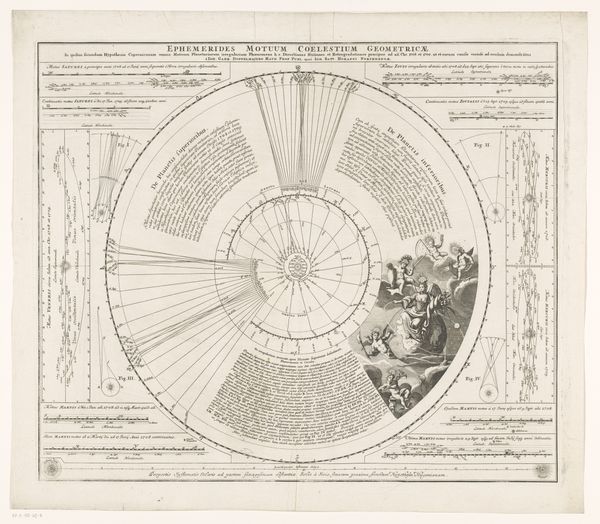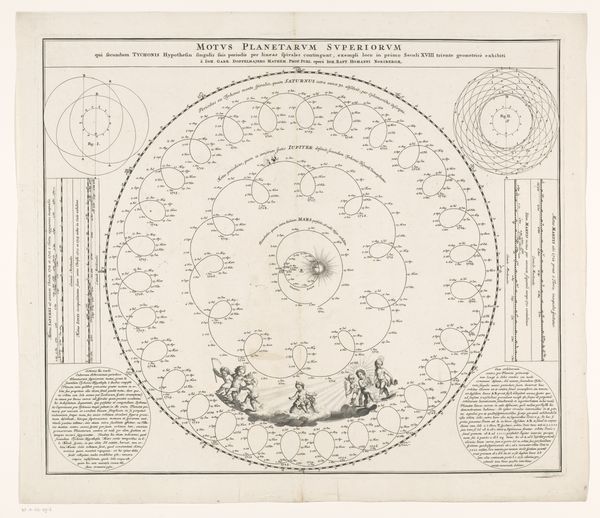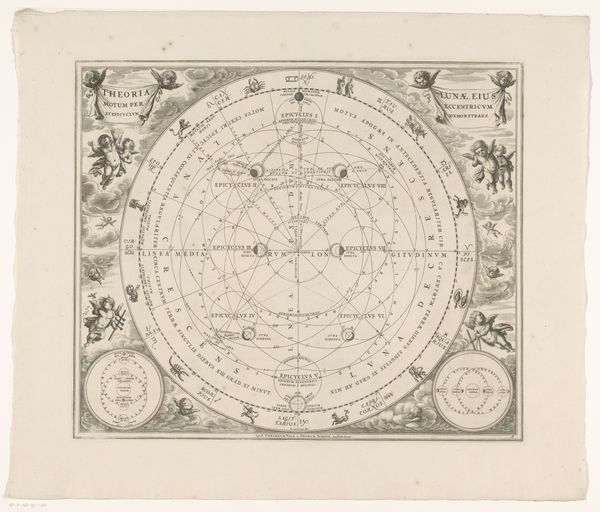
Ground Plan for a Catafalque for Eleonora Magdalena Theresa (6 Jan. 1655 - 19 Jan. 1720) 1715 - 1725
0:00
0:00
drawing, print, architecture
#
drawing
#
baroque
# print
#
architecture
Dimensions: 19-1/2 x 12-3/4 in. (49.5 x 32.4 cm)
Copyright: Public Domain
Curator: The precise linework immediately captures my attention—it possesses a captivating symmetrical layout. Editor: We’re looking at "Ground Plan for a Catafalque for Eleonora Magdalena Theresa," a drawing by Giuseppe Galli Bibiena, dating roughly from 1715 to 1725. Bibiena designed theatrical sets and decorations for emperors; this detailed rendering on paper suggests the grandeur of Baroque funerals. Curator: Yes, its material precision certainly underlines the artist's training, no doubt steeped in architectural practices. Each component contributes to an elaborate expression that is quite stunning. However, such an ambitious project certainly depended on the contributions and work of a wide range of individuals and workshops to come to life. Editor: Consider how the very composition—concentric circles intersected by symmetrical extensions—functions formally. It emphasizes, through line and geometry, both central focus and outward projection. There's a spiritual dynamic evoked here; as a diagram of ceremonial space it pulls us toward and elevates beyond material existence. Curator: Absolutely, this object becomes especially meaningful in understanding how spectacle was consumed and its propaganda value in reinforcing class systems in that era. In addition, its significance may also be enhanced by scrutinizing how this image and other artifacts relating to the empress' funeral participated in the construction of her image and power. Editor: I would just say it elegantly synthesizes visuality, structure and concept; its meaning extends beyond function through a harmonious design principle and skilled craftsmanship. Curator: This indeed gives an insight into understanding the cultural beliefs, ceremonial customs and modes of craftsmanship prevalent in Bibiena's period. It highlights the material conditions required for royal display. Editor: Agreed. These Baroque details give us a rich demonstration of art functioning in its time but offering form transcending it. A rather fitting summary, I think.
Comments
No comments
Be the first to comment and join the conversation on the ultimate creative platform.
